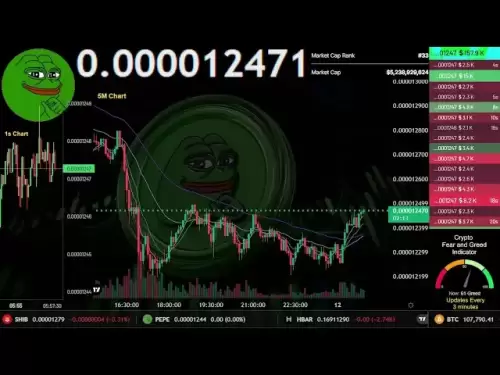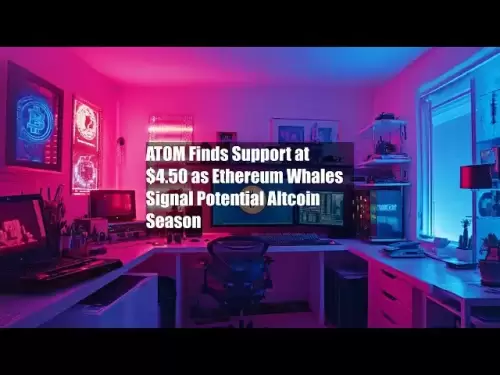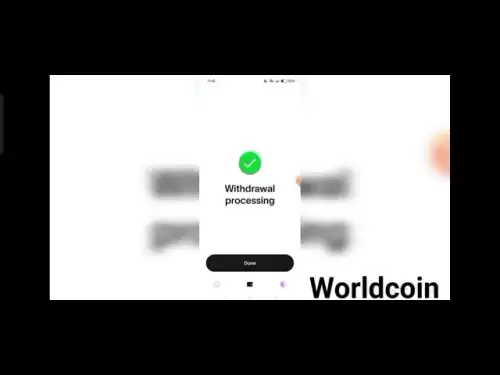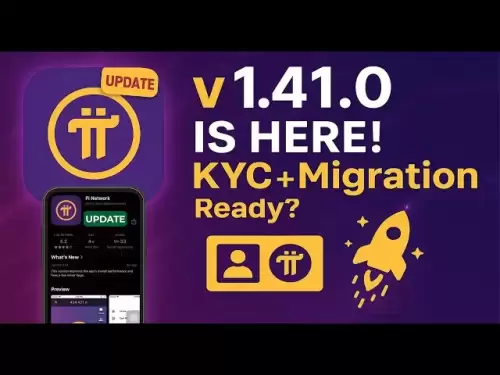-
 Bitcoin
Bitcoin $107,525.4151
-1.78% -
 Ethereum
Ethereum $2,735.6082
-4.05% -
 Tether USDt
Tether USDt $1.0001
0.01% -
 XRP
XRP $2.2422
-3.58% -
 BNB
BNB $662.7596
-0.79% -
 Solana
Solana $158.1687
-5.10% -
 USDC
USDC $0.9999
0.01% -
 Dogecoin
Dogecoin $0.1877
-7.49% -
 TRON
TRON $0.2747
-4.49% -
 Cardano
Cardano $0.6822
-5.47% -
 Hyperliquid
Hyperliquid $42.8962
-1.51% -
 Sui
Sui $3.3250
-4.95% -
 Chainlink
Chainlink $14.3884
-7.23% -
 Avalanche
Avalanche $21.0727
-6.00% -
 Bitcoin Cash
Bitcoin Cash $436.3853
-1.50% -
 Stellar
Stellar $0.2743
-2.67% -
 UNUS SED LEO
UNUS SED LEO $8.8628
-1.94% -
 Toncoin
Toncoin $3.1809
-3.06% -
 Shiba Inu
Shiba Inu $0.0...01261
-6.46% -
 Hedera
Hedera $0.1687
-4.92% -
 Litecoin
Litecoin $88.6994
-4.81% -
 Polkadot
Polkadot $4.0555
-5.96% -
 Monero
Monero $324.3593
-3.71% -
 Ethena USDe
Ethena USDe $1.0004
-0.02% -
 Bitget Token
Bitget Token $4.7112
-3.27% -
 Dai
Dai $0.9998
0.00% -
 Pepe
Pepe $0.0...01205
-9.02% -
 Uniswap
Uniswap $7.8362
-4.82% -
 Pi
Pi $0.6225
-2.58% -
 Aave
Aave $300.8914
-3.70%
Is HBAR OTC trading safe? How to avoid being cheated
HBAR OTC trading offers privacy but carries risks like fraud; use trusted escrow services and verify traders' legitimacy to stay safe.
Apr 29, 2025 at 11:15 pm
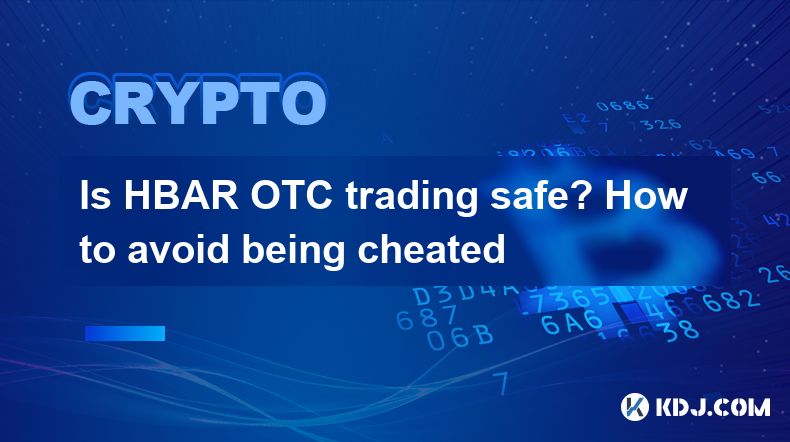
Is HBAR OTC trading safe? How to avoid being cheated
Over-the-counter (OTC) trading of cryptocurrencies like HBAR (Hedera Hashgraph) can be a convenient way to buy or sell large volumes of digital assets without affecting the market price. However, it also comes with its own set of risks. In this article, we will explore the safety of HBAR OTC trading and provide detailed guidance on how to avoid being cheated in such transactions.
Understanding HBAR OTC Trading
HBAR OTC trading refers to the process of trading Hedera Hashgraph tokens directly between two parties without the use of a traditional exchange. This type of trading is often used for large transactions that could otherwise move the market price significantly on public exchanges. OTC trading can offer several benefits, including privacy, flexibility, and the ability to negotiate prices directly.
However, OTC trading also carries inherent risks. Since these transactions occur outside of regulated exchanges, there is less oversight and fewer protections for traders. It's crucial to understand these risks before engaging in OTC trading of HBAR or any other cryptocurrency.
Risks Associated with HBAR OTC Trading
When participating in HBAR OTC trading, you should be aware of several potential risks:
Counterparty Risk: This is the risk that the other party in the transaction may fail to fulfill their obligations. In OTC trading, there is no intermediary to guarantee the transaction, so you must trust the other party completely.
Fraud and Scams: OTC markets are fertile ground for scammers who may pose as legitimate traders. They might disappear with your funds or deliver counterfeit tokens.
Lack of Transparency: OTC trades often lack the transparency provided by public exchanges. This can make it difficult to verify the legitimacy of the other party and the terms of the trade.
Regulatory Risks: Depending on your jurisdiction, OTC trading may be subject to different regulations or may not be fully compliant with local laws.
How to Safely Engage in HBAR OTC Trading
To safely engage in HBAR OTC trading, follow these detailed steps:
Conduct Thorough Research: Before entering into any OTC trade, research the counterparty thoroughly. Look for reviews, testimonials, and any history of past trades. Use resources like social media, forums, and professional networks to gather information.
Use a Trusted Escrow Service: Employing an escrow service can add a layer of security to your OTC trades. An escrow service holds the funds until both parties fulfill their obligations, reducing the risk of fraud. Ensure the escrow service is reputable and has a track record of successful transactions.
Verify the Counterparty's Identity: Request proof of identity and, if possible, a video call to verify the person you are dealing with. This can help prevent scams and ensure you are dealing with a legitimate trader.
Negotiate Clear Terms: Clearly define the terms of the trade, including the price, quantity, and timeline. Both parties should agree to these terms in writing before proceeding with the transaction.
Use Secure Communication Channels: Communicate through secure channels to protect your personal information and prevent interception by third parties. Use encrypted messaging apps or email services with end-to-end encryption.
Monitor the Transaction: Keep a close eye on the transaction process. If anything seems suspicious or if the counterparty delays without reason, be prepared to halt the transaction and seek assistance.
Common Scams in HBAR OTC Trading
Understanding common scams can help you avoid falling victim to them. Here are some prevalent scams in HBAR OTC trading:
Pump and Dump Schemes: Scammers may artificially inflate the price of HBAR through coordinated buying, then sell off their holdings, leaving other investors with devalued tokens.
Fake Escrow Services: Some scammers set up fake escrow services to gain access to your funds. Always verify the legitimacy of the escrow service before using it.
Phishing Attacks: Scammers may pose as legitimate traders or OTC platforms, tricking you into revealing your private keys or sending funds to fraudulent addresses.
Advance Fee Fraud: Scammers may request an upfront payment for supposed fees or services, only to disappear after receiving the payment.
How to Verify the Legitimacy of an OTC Trader
Verifying the legitimacy of an OTC trader is crucial for safe trading. Here are steps to help you do so:
Check Online Reviews and Testimonials: Look for reviews and testimonials from other traders who have dealt with the person. Be cautious of overly positive reviews without any negative feedback, as these may be fabricated.
Use Professional Networks: If possible, seek references from professional networks or industry contacts. A reputable trader should have a network of other traders who can vouch for their legitimacy.
Request Proof of Past Trades: Ask for proof of previous OTC trades, such as transaction hashes or screenshots of completed trades. Verify these proofs to ensure they are legitimate.
Perform Background Checks: Conduct background checks to verify the trader's identity and history. Use public records or paid services to gather this information.
Use Blockchain Analytics Tools: Utilize blockchain analytics tools to trace the trader's wallet addresses and transaction history. This can help you determine if they have a history of legitimate trading activity.
Steps to Take if You Suspect Fraud
If you suspect fraud during an HBAR OTC trade, take the following steps immediately:
Cease Communication: Stop all communication with the suspected scammer to prevent further manipulation or phishing attempts.
Document Everything: Keep detailed records of all communications, transactions, and agreements. This documentation can be crucial if you need to report the scam to authorities.
Report the Scam: Report the scam to relevant authorities, such as local law enforcement or cryptocurrency regulatory bodies. Provide them with all the documentation you have gathered.
Seek Professional Help: Consult with a legal or cybersecurity professional to help you recover any lost funds and protect yourself from future scams.
Warn Others: Share your experience on forums, social media, and other platforms to warn other traders about the scammer. This can help prevent others from falling victim to the same fraud.
Frequently Asked Questions
Q: Can I use a traditional exchange to mitigate the risks of HBAR OTC trading?
A: While traditional exchanges offer more regulatory oversight and security, they are not typically used for OTC trading. However, you can use exchanges to verify the legitimacy of a trader by checking their transaction history or using their escrow services for OTC trades.
Q: Are there any specific tools or services recommended for HBAR OTC trading?
A: Some recommended tools for HBAR OTC trading include reputable escrow services like Escrow.com, blockchain analytics tools like Chainalysis, and secure communication platforms like Signal or Telegram with end-to-end encryption.
Q: How can I ensure the HBAR tokens I receive in an OTC trade are legitimate?
A: To ensure the HBAR tokens are legitimate, use a blockchain explorer to verify the transaction and the token's origin. Additionally, check the token's smart contract address against the official Hedera Hashgraph documentation to ensure it matches.
Q: What should I do if an OTC trade goes wrong and I lose my funds?
A: If you lose funds in an OTC trade, immediately stop all communication with the counterparty, document everything, report the incident to authorities, and seek professional help to recover your funds and prevent future scams.
Disclaimer:info@kdj.com
The information provided is not trading advice. kdj.com does not assume any responsibility for any investments made based on the information provided in this article. Cryptocurrencies are highly volatile and it is highly recommended that you invest with caution after thorough research!
If you believe that the content used on this website infringes your copyright, please contact us immediately (info@kdj.com) and we will delete it promptly.
- USDC Expands Its Stablecoin Offering to XRP Ledger (XRPL), Targeting New Use Cases
- 2025-06-13 00:01:18
- How to Track Your Wallet Activity On Etherscan
- 2025-06-13 00:01:18
- Bitcoin Solaris (BTC-S): The Next 10,000x?
- 2025-06-13 00:01:17
- BlockDAG (BDAG) Emerges as a Contender by Hooking NBA Buzz
- 2025-06-13 00:01:17
- Hacker Who Stole $23 Million from Crypto Exchange Bittrue Starts Laundering Proceeds Through Tornado Cash
- 2025-06-12 23:50:12
- Bitcoin Briefly Surpassed $110,000
- 2025-06-12 23:50:12
Related knowledge

The relationship between USDT TRC20 and TRON chain: technical background analysis
Jun 12,2025 at 01:28pm
What is USDT TRC20?USDT TRC20 refers to the Tether (USDT) token issued on the TRON blockchain using the TRC-20 standard. Unlike the more commonly known ERC-20 version of USDT (which runs on Ethereum), the TRC-20 variant leverages the TRON network's infrastructure for faster and cheaper transactions. The emergence of this version came as part of Tether’s...

How to monitor large USDT TRC20 transfers? Tracking tool recommendation
Jun 12,2025 at 06:49pm
Understanding USDT TRC20 TransfersTether (USDT) is one of the most widely used stablecoins in the cryptocurrency ecosystem. It exists on multiple blockchains, including TRON (TRC20). The TRC20 version of USDT operates on the TRON network and offers faster transaction speeds and lower fees compared to its ERC-20 counterpart on Ethereum. When discussing l...
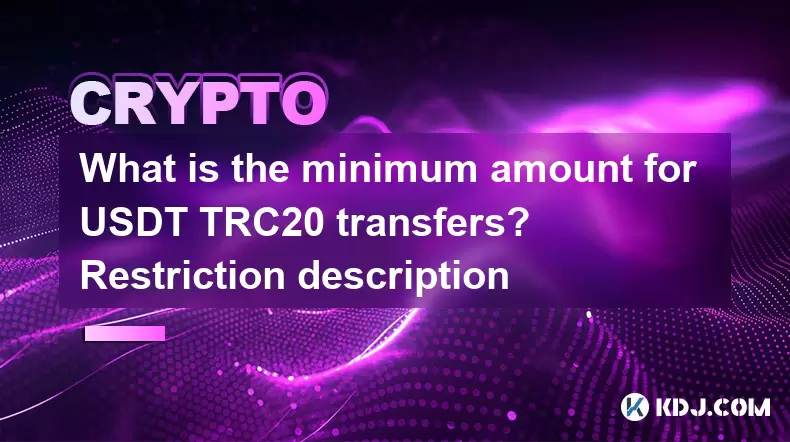
What is the minimum amount for USDT TRC20 transfers? Restriction description
Jun 12,2025 at 03:56am
Understanding USDT TRC20 Transfer MechanismTether (USDT) is one of the most widely used stablecoins in the cryptocurrency ecosystem. It operates on multiple blockchain networks, including TRON (TRC20). The TRC20 protocol offers faster and cheaper transactions compared to other blockchains like Ethereum (ERC20). However, users often inquire about the min...
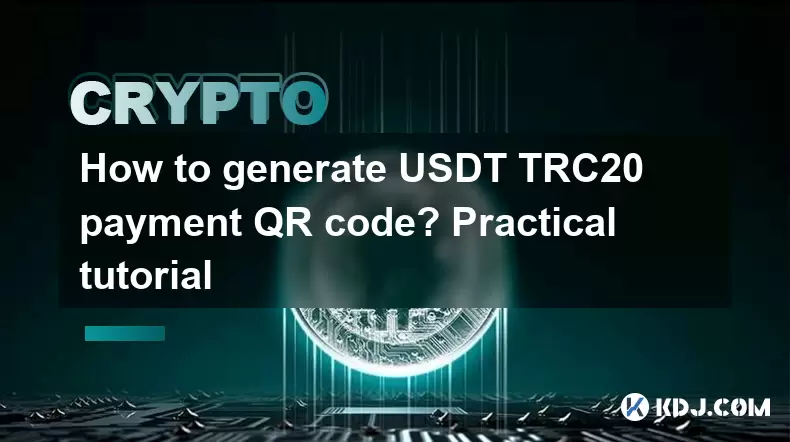
How to generate USDT TRC20 payment QR code? Practical tutorial
Jun 12,2025 at 01:29am
Understanding USDT TRC20 and QR CodesUSDT TRC20 refers to the Tether token issued on the TRON blockchain, which is one of the most widely used stablecoins in the cryptocurrency ecosystem. Generating a QR code for USDT TRC20 payments allows users to receive funds quickly and securely by scanning the code with a compatible wallet. Before proceeding, it’s ...
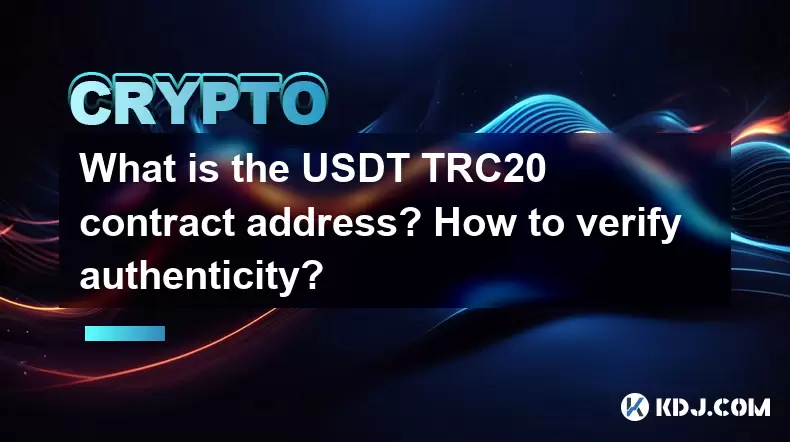
What is the USDT TRC20 contract address? How to verify authenticity?
Jun 12,2025 at 01:56pm
Understanding the USDT TRC20 Contract AddressThe USDT TRC20 contract address refers to the unique identifier of the Tether (USDT) token on the TRON blockchain. Unlike other versions of USDT that operate on different blockchains, such as Ethereum (ERC-20), the TRC20 version is specifically deployed on the TRON network. The contract address for USDT TRC20...
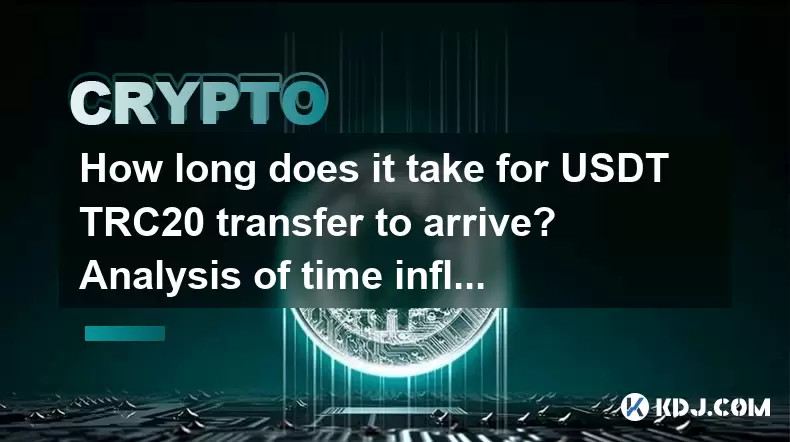
How long does it take for USDT TRC20 transfer to arrive? Analysis of time influencing factors
Jun 12,2025 at 09:07am
Understanding USDT TRC20 Transfer MechanismUSDT TRC20 refers to the Tether token issued on the TRON blockchain, specifically under the TRC-20 protocol. Unlike traditional banking systems or even other blockchain protocols like ERC-20 on Ethereum, TRC20 transactions are known for their high speed and low fees. However, the actual time it takes for a USDT...

The relationship between USDT TRC20 and TRON chain: technical background analysis
Jun 12,2025 at 01:28pm
What is USDT TRC20?USDT TRC20 refers to the Tether (USDT) token issued on the TRON blockchain using the TRC-20 standard. Unlike the more commonly known ERC-20 version of USDT (which runs on Ethereum), the TRC-20 variant leverages the TRON network's infrastructure for faster and cheaper transactions. The emergence of this version came as part of Tether’s...

How to monitor large USDT TRC20 transfers? Tracking tool recommendation
Jun 12,2025 at 06:49pm
Understanding USDT TRC20 TransfersTether (USDT) is one of the most widely used stablecoins in the cryptocurrency ecosystem. It exists on multiple blockchains, including TRON (TRC20). The TRC20 version of USDT operates on the TRON network and offers faster transaction speeds and lower fees compared to its ERC-20 counterpart on Ethereum. When discussing l...

What is the minimum amount for USDT TRC20 transfers? Restriction description
Jun 12,2025 at 03:56am
Understanding USDT TRC20 Transfer MechanismTether (USDT) is one of the most widely used stablecoins in the cryptocurrency ecosystem. It operates on multiple blockchain networks, including TRON (TRC20). The TRC20 protocol offers faster and cheaper transactions compared to other blockchains like Ethereum (ERC20). However, users often inquire about the min...

How to generate USDT TRC20 payment QR code? Practical tutorial
Jun 12,2025 at 01:29am
Understanding USDT TRC20 and QR CodesUSDT TRC20 refers to the Tether token issued on the TRON blockchain, which is one of the most widely used stablecoins in the cryptocurrency ecosystem. Generating a QR code for USDT TRC20 payments allows users to receive funds quickly and securely by scanning the code with a compatible wallet. Before proceeding, it’s ...

What is the USDT TRC20 contract address? How to verify authenticity?
Jun 12,2025 at 01:56pm
Understanding the USDT TRC20 Contract AddressThe USDT TRC20 contract address refers to the unique identifier of the Tether (USDT) token on the TRON blockchain. Unlike other versions of USDT that operate on different blockchains, such as Ethereum (ERC-20), the TRC20 version is specifically deployed on the TRON network. The contract address for USDT TRC20...

How long does it take for USDT TRC20 transfer to arrive? Analysis of time influencing factors
Jun 12,2025 at 09:07am
Understanding USDT TRC20 Transfer MechanismUSDT TRC20 refers to the Tether token issued on the TRON blockchain, specifically under the TRC-20 protocol. Unlike traditional banking systems or even other blockchain protocols like ERC-20 on Ethereum, TRC20 transactions are known for their high speed and low fees. However, the actual time it takes for a USDT...
See all articles





















